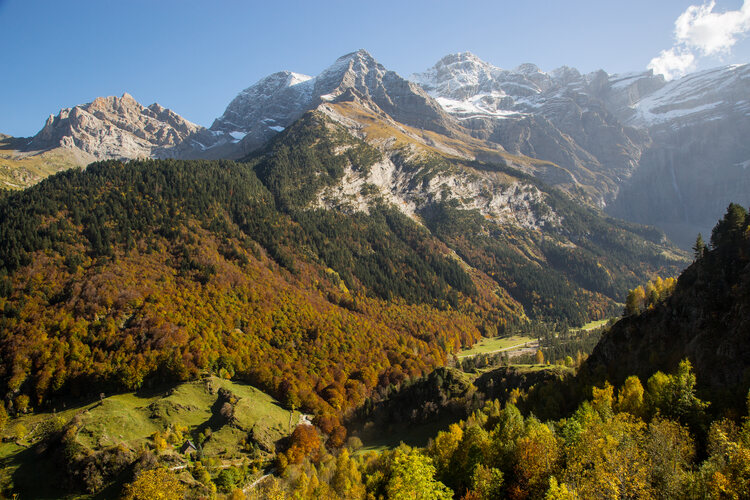
Vanishing waterfalls and glacier-free summits. The Pyrenees mountains are on the frontline of climate change
By
Described by celebrated French writer, Victor Hugo, as the ‘colossus’of nature’, the Cirque de Gavarnie is a giant glacial mountain cirque in the middle of the beautiful French Pyrenees. The walls of the cirque climb an extraordinary 1,500m vertically up from the valley floor to form a ring of 3,000-metre-high mountain peaks draped in glaciers.
The place is so impressive – both from a visual and geological perspective – that it’s one of the few natural sites on Earth to have obtained the UNESCO triple crown of World Heritage Site, World Biosphere Reserve and Geo Park.
At the heart of the cirque is the Grand Cascade. With a double drop totalling 422 metres, it’s the highest waterfall in mainland France and one of the highest in Europe.
You might think that such a force of nature is impervious to change, but, as was widely reported in French media in mid-October, the Cascade de Gavarnie – the showpiece of tourism in the French Pyrenees – has recently become a mere trickle. And it’s all because of our old friend: climate change.
Thanks to a combination of winter rains and melting snow, in the spring, the amount of water thundering down the cascade can reach 200 cubic metres per second. By the end of summer the rate is – naturally – almost always less, but this year the decline is even more notable than normal and by 16 October the waterfall was barely visible at all.
According to Météo Pyrénées the average annual rainfall for the Gavarnie area is 1,500mm. But in the period between 1 January 2023 and 11 October 2023 only 754mm of precipitation had been recorded, with the first part of autumn 2023 being the warmest – and driest – on record for the Pyrenees. All of this followed on from the exceptionally hot and dry summer of 2022 and an unusually low snowfall over the winter of 2022/23.
Caroline Vergez, owner of the iconic Hôtel de Cirque, which has been under the management of the same family for seven generations, said to French media: ‘From the village, where we normally see it [the waterfall] very well, we have difficulty distinguishing it. When we approach the hotel, we see that it is flowing, but with much less water. This has never happened before.’

The situation with the Gavarnie waterfall is only one part of the climate change story in the Pyrenees. These mountains, which divide France from Spain and are something of a climatic front line, contain the most southerly large glaciers in Europe. But, for how much longer is uncertain.
In 2021, it was reported by the Instituto Pirenaico de Ecologiá (IPE; in Spanish) that the surface area of glaciers throughout the Pyrenees had decreased by 23.2 per cent in just ten years and that there had been an average decrease in glacier thickness by 6.3 metres over the same period. The report also highlighted that three large glaciers on the French side of the chain had vanished completely during the same time frame and that the glacier on Aneto (3,404m), the highest peak in the range, had split into two. The report ended on a pessimistic tone by saying that all the glaciers in the Pyrenees could disappear within the next twenty years.
A year later, in November 2022, UNESCO backed these thoughts up in a report that stated that of fifty Unesco World Heritage Sites containing glaciers around a third of them – including the Pyrenees – would likely lose all their glaciers by 2050.
So it seems likely that while the giant walls of Victor Hugo’s ‘colossus of nature’ will remain strong far into the future, they will no longer be coated in permanent ice and massaged by great waterfalls.



